The most interesting light in which the Indians of North America can be regarded is in their present representation of a stage of evolution once passed through by our own ancestors. Their signs, as well as their myths and customs, form a part of the paleontology of humanity to be studied in the history of the latter as the geologist, with similar object, studies all the strata of the physical world. At this time it is only possible to suggest the application of gesture signs to elucidate pictographs, and also their examination to discover religious, sociologic, and historic ideas preserved in them, as has been done with great success in the radicals of oral speech.
Signs Connected with Pictographs
The picture writing of Indians is the sole form in which they recorded events and ideas that can ever be interpreted without the aid of a traditional key, such as is required for the signification of the wampum belts of the Northeastern tribes and the quippus of Peru. Strips of bark, tablets of wood, dressed skins of animals, and the smooth surfaces of rock have been and still are used for such records, those most ancient, and therefore most interesting, being of course the rock etchings; but they can only be deciphered, if at all, by the ascertained principles on which the more modern and the more obvious are made. Many of the numerous and widespread rock carvings are mere idle sketchesof natural objects, mainly animals, and others are as exclusively mnemonic as the wampum above mentioned. Even since the Columbian discovery some tribes have employed devices yet ruder than the rudest pictorial attempt as markers for the memory. An account of one of these is given in E. Winslow’s Relation (A.D. 1624), Col. Mass. Hist. Soc., 2d series, ix, 1822, p. 99, as follows:
“Instead of records and chronicles they take this course: Where any remarkable act is done, in memory of it, either in the place or by some pathway near adjoining, they make a round hole in the ground about a foot deep, and as much over, which, when others passing by behold, they inquire the cause and occasion of the same, which being once known, they are careful to acquaint all men as occasion serveth therewith. And lest such holes should be filled or grown over by any accident, as men pass by they will often renew the same; by which means many things of great antiquity are fresh in memory. So that as a man traveleth, if he can understand his guide, his journey will be the less tedious, by reason of the many historical discourses which will be related unto him.”
Gregg, in Commerce of the Prairies, New York, 1844, II, 286, says of the Plains tribes: “When traveling, they will also pile heaps of stones upon mounds or conspicuous points, so arranged as to be understood by their passing comrades; and sometimes they set up the bleached buffalo heads, which are everywhere scattered over those plains, to indicate the direction of their march, and many other facts which may be communicated by those simple signs.”


A more ingenious but still arbitrary mode of giving intelligence is practiced at this day by the Abnaki, as reported by H.L. Masta, chief of that tribe, now living at Pierreville, Quebec. When they are in the woods, to say “I am going to the east,” a stick is stuck in the ground pointing to that direction, Fig. 151. “Am not gone far,” another stick is stuck across the former, close to the ground, Fig. 152. “Gone far” is the reverse, Fig. 153. The number of days journey of proposed absence is shown by the same number of sticks across the first; thus Fig. 154 signifies five days’ journey. Cutting the bark off from a tree on one, two, three or four sides near the butt means “Have had poor, poorer, poorest luck.” Cutting it off all around the tree means “I am starving.” Smoking a piece of birch bark and hanging it on a tree means “I am sick.”
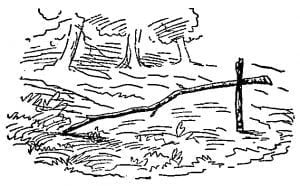
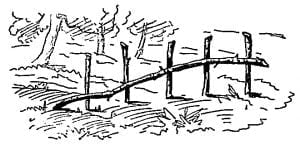
Where there has existed any form of artistic representation, however rude, and at the same time a system of ideographic gesture signs prevailed, it would be expected that the form of the latter would appear in the former. The sign of river and water mentioned on page 358 being established, when it became necessary or desirable to draw a character or design to convey the same idea, nothing would be more natural than to use the graphic form of delineation which is also above described. It was but one more and an easy step to fasten upon bark, skins, or rocks the evanescent air pictures that still in pigments or carvings preserve their skeleton outline, and in their ideography approach, as has been shown above, the rudiments of the phonetic alphabets that have been constructed by other peoples. A transition stage between gestures and pictographs, in which the left hand is used as a supposed drafting surface upon which the index draws lines, is exhibited in the Dialogue between Alaskan Indians, infra, page 498. This device is common among deaf-mutes, without equal archæologic importance, as it may have been suggested by the art of writing, with which they are generally acquainted, even if not instructed in it.
The reproduction of apparent gesture lines in the pictographs made by our Indians has, for obvious reasons, been most frequent in the attempt to convey those subjective ideas which were beyond the range of an artistic skill limited to the direct representation of objects, so that the part of the pictographs which is still the most difficult of interpretation is precisely the one which the study of sign language is likely to elucidate. The following examples of pictographs of the Indians, in some cases compared with those from foreign sources, have been selected because their interpretation is definitely known and the gestures corresponding with or suggested by them are well determined.
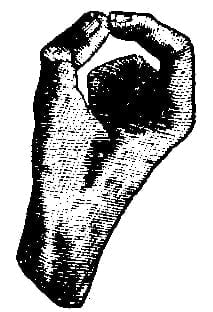





Sun, Light
The common Indian gesture sign for sun is: “Right hand closed, the index and thumb curved, with tips touching, thus approximating a circle, and held toward the sky,” the position of the fingers of the hand forming a circle being shown in Fig. 155.

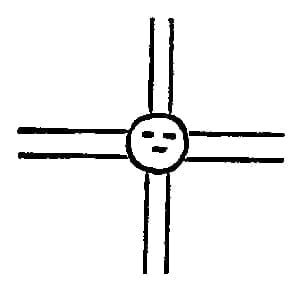
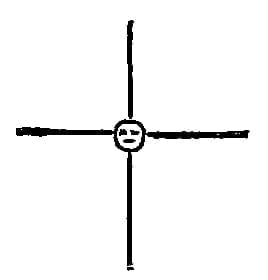

Two of the Egyptian characters for sun, Figs. 156 and 157, are plainly the universal conception of the disk. The latter, together with indications of rays, Fig. 158, and in its linear form, Fig. 159, (Champollion, Dict., 9), constitutes the Egyptian character for light. The rays emanating from the whole disk appear in Figs. 160 and 161, taken from a MS. contributed by Mr. G.K. Gilbert of the United States Geological Survey, from the rock etchings of the Moqui pueblos in Arizona. The same authority gives from the same locality Figs. 162 and 163 for sun, which may be distinguished from several other similar etchings for star also given by him, Figs. 164, 165, 166, 167, by always showing some indication of a face, the latter being absent in the characters denoting star.

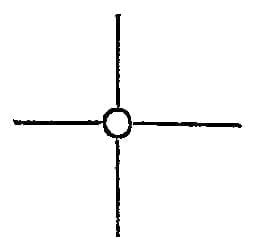
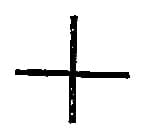

With the above characters for sun compare Fig. 168, found at Cuzco, Peru, and taken from Wiener’s Pérou et Bolivie, Paris, 1880, p. 706.
The Ojibwa pictograph for sun is seen in Fig. 169, taken from Schoolcraft, loc. cit., v. 1, pl. 56, Fig. 67.
Sunrise, Morning
A gesture sign for sunrise, morning, is: Forefinger of right hand crooked to represent half of the sun’s disk and pointed or extended to the left, then slightly elevated. (Cheyenne II.) In this connection it may be noted that when the gesture is carefully made in open country the pointing would generally be to the east, and the body turned so that its left would be in that direction. In a room in a city, or under circumstances where the points of the compass are not specially attended to, the left side supposes the east, and the gestures relating to sun, day, &c., are made with such reference. The half only of the disk represented in the above gesture appears in the following Moqui pueblo etchings for morning and sunrise, Figs. 170, 171, and 172. (Gilbert, MS.)
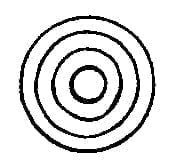
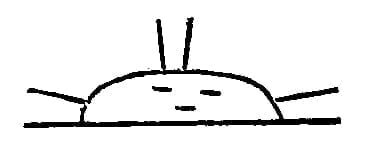
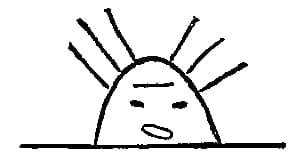
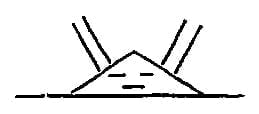
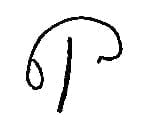
Fig. 173 shows a pictograph found in Owen’s Valley, California, a similar one being reported in the Ann. Rep. Geog. Survey west of the 100th Meridian for 1876, Washington, 1876, pl. opp. p. 326, in which the circle may indicate either day or month (both these gestures having the same execution), the course of the sun or moon being represented perhaps in mere contradistinction to the vertical line, or perhaps the latter signifies one.

Fig. 174 is a pictograph of the Coyotero Apaches, found at Camp Apache, in Arizona, reported in the Tenth Ann. Rep. U.S. Geolog. and Geograph. Survey of the Territories for 1876, Washington, 1878, pl. lxxvii. The sun and the ten spots of approximately the same shape represent the days, eleven, which the party with five pack mules passed in traveling through the country. The separating lines are the nights, and may include the conception of covering over and consequent obscurity above referred to (page 354).
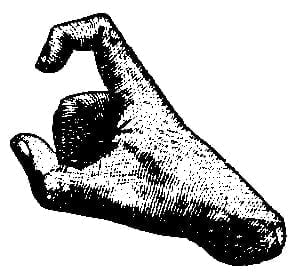
Moon, Month
A common sign for moon, month, is the right hand closed, leaving the thumb and index extended, but curved to form a half circle and the hand held toward the sky, in a position which is illustrated in Fig. 175, to which curve the Moqui etching, Fig. 176, and the identical form in the ancient Chinese has an obvious resemblance.
The crescent, as we commonly figure the satellite, appears also in the Ojibwa pictograph, Fig. 177 (Schoolcraft, I, pl. 58), which is the same, with a slight addition, as the Egyptian figurative character.
Sky, Heaven
The sign for sky, also heaven, is generally made by passing the index from east to west across the zenith. This curve is apparent in the Ojibwa pictograph Fig. 178, reported in Schoolcraft, I, pl. 18, Fig. 21, and is abbreviated in the Egyptian character with the same meaning, Fig. 179 (Champollion, Dict., p. 1).




Cloud
A sign for cloud is as follows: (1) Both hands partially closed, palms facing and near each other, brought up to level with or slightly above, but in front of the head; (2) suddenly separated sidewise, describing a curve like a scallop; this scallop motion is repeated for “many clouds.” (Cheyenne II.) The same conception is in the Moqui etchings, Figs. 180, 181, and 182 (Gilbert MS.)

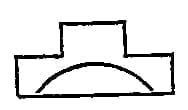

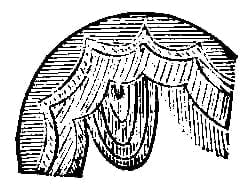
The Ojibwa pictograph for cloud is more elaborate, Fig. 183, reported in Schoolcraft, I, pl. 58. It is composed of the sign for sky, to which that for clouds is added, the latter being reversed as compared with the Moqui etchings, and picturesquely hanging from the sky.
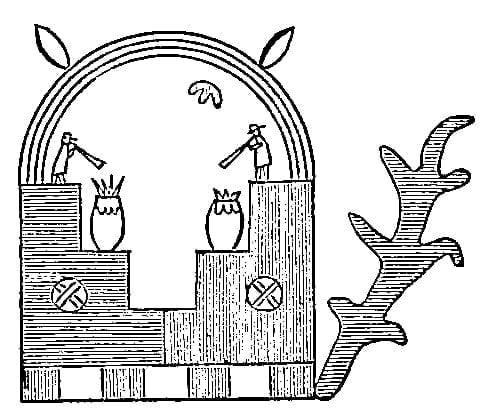
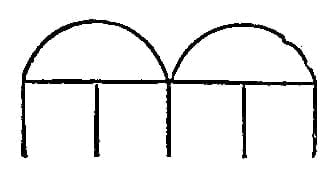
The gesture sign for rain is described and illustrated on page 344. The pictograph, Fig. 184, reported as found in New Mexico by [pg 373] Lieutenant Simpson (Ex. Doc. No. 64, Thirty-first Congress, first session, 1850, pl. 9) is said to represent Montezuma’s adjutants sounding a blast to him for rain. The small character inside the curve which represents the sky, corresponds with the gesturing hand. The Moqui etching (Gilbert MS.) for rain, i.e., a cloud from which the drops are falling, is given in Fig. 185.
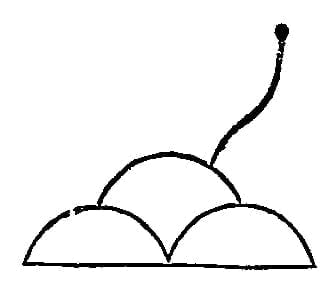

Lightning
The same authority gives two signs for lightning, Figs. 186 and 187. In the latter the sky is shown, the changing direction of the streak, and clouds with rain falling. The part relating specially to the streak is portrayed in a sign as follows: Right hand elevated before and above the head, forefinger pointing upward, brought down with great rapidity with a sinuous, undulating motion; finger still extended diagonally downward toward the right. (Cheyenne II.)
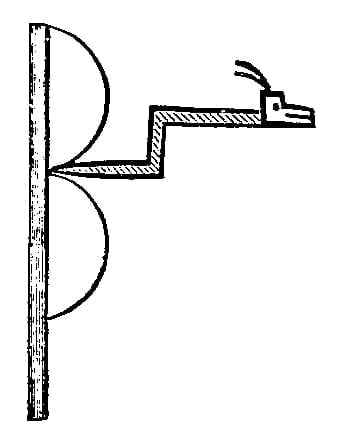
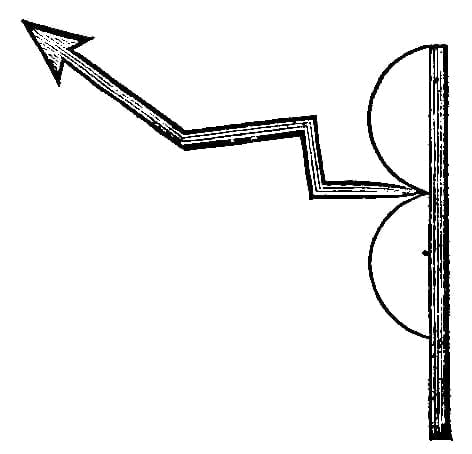
Figs. 188 and 189 also represent lightning, taken by Mr. W.H. Jackson, photographer of the late U.S. Geolog. and Geog. Survey, from the decorated walls of an estufa in the Pueblo de Jemez, New Mexico. The former is blunt, for harmless, and the latter terminating in an arrow or spear point, for destructive or fatal, lightning.
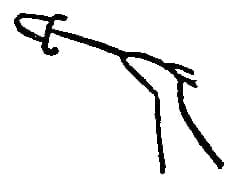
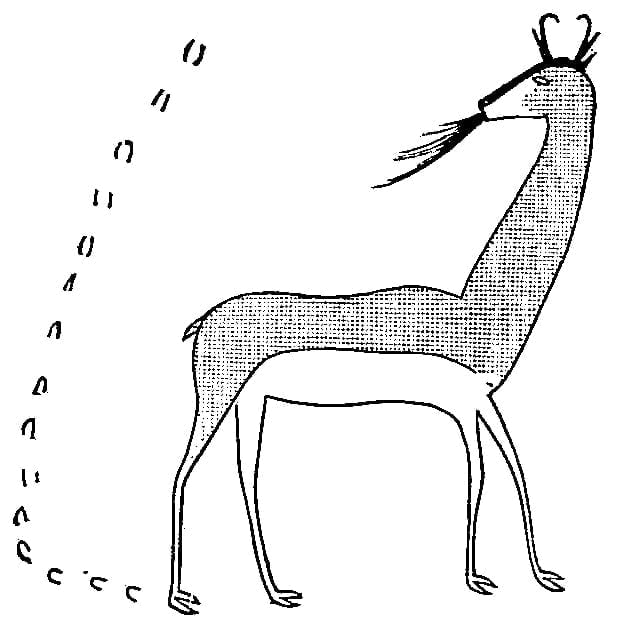
A common sign for speech, speak, among the Indians is the repeated motion of the index in a straight line forward from the mouth. This line, indicating the voice, is shown in Fig. 190, taken from the Dakota Calendar, being the expression for the fact that “the-Elk-that-hollows-walking,” a Minneconjou chief, “made [pg 374] medicine.” The ceremony is indicated by the head of an albino buffalo. A more graphic portraiture of the conception of voice is in Fig. 191, representing an antelope and the whistling sound produced by the animal on being surprised or alarmed. This is taken from MS. drawing book of an Indian prisoner at Saint Augustine, Fla., now in the Smithsonian Institution, No. 30664.
Fig. 192 is the exhibition of wrestling for a turkey, the point of interest in the present connection being the lines from the mouth to the objects of conversation. It is taken from the above-mentioned MS. drawing book.
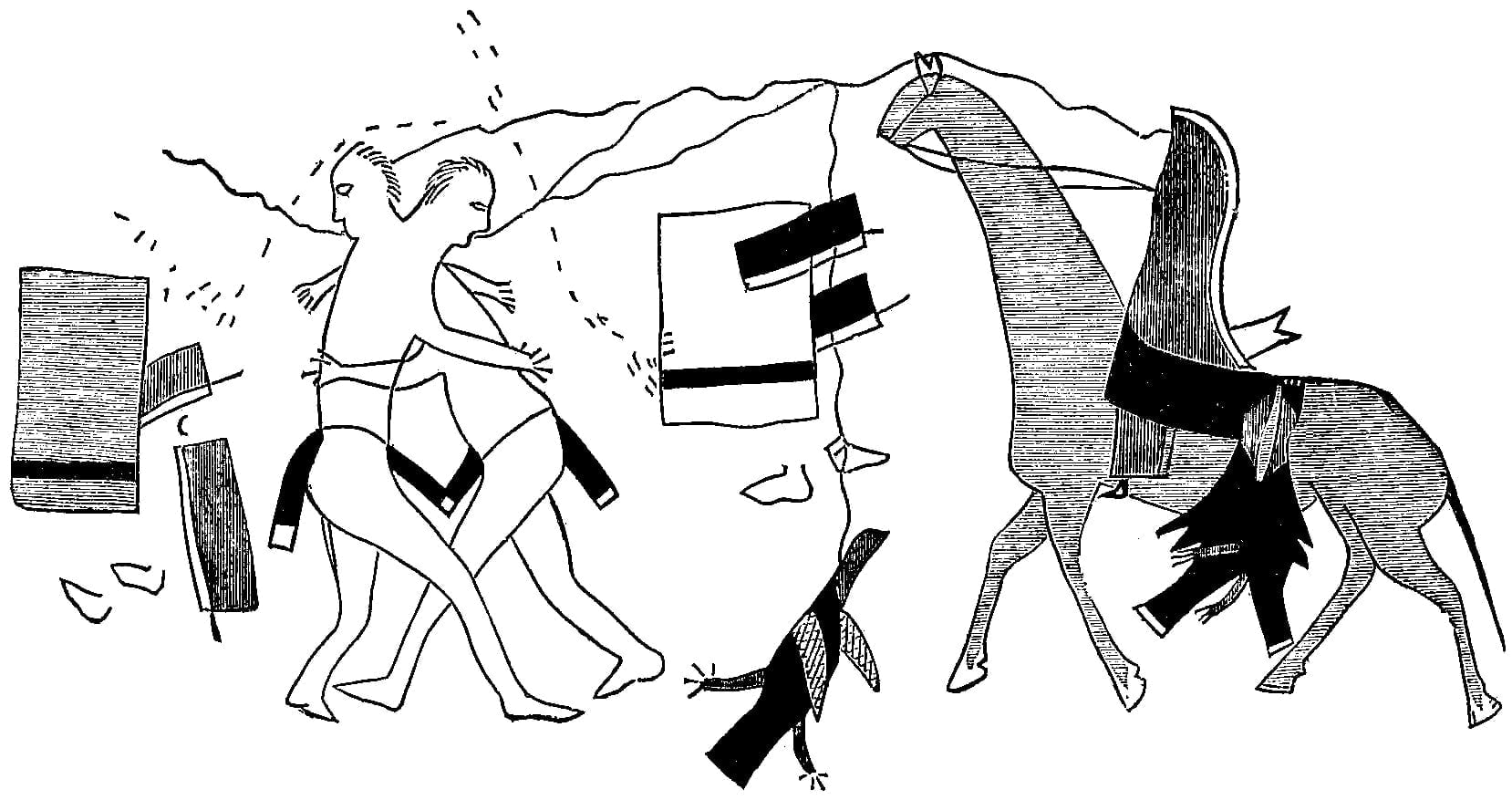
The wrestlers, according to the foot prints, had evidently come together, when, meeting the returning hunter, who is wrapped in his blanket with only one foot protruding, they separated and threw off their blankets, leggings, and moccasins, both endeavoring to win the turkey, which lies between them and the donor.
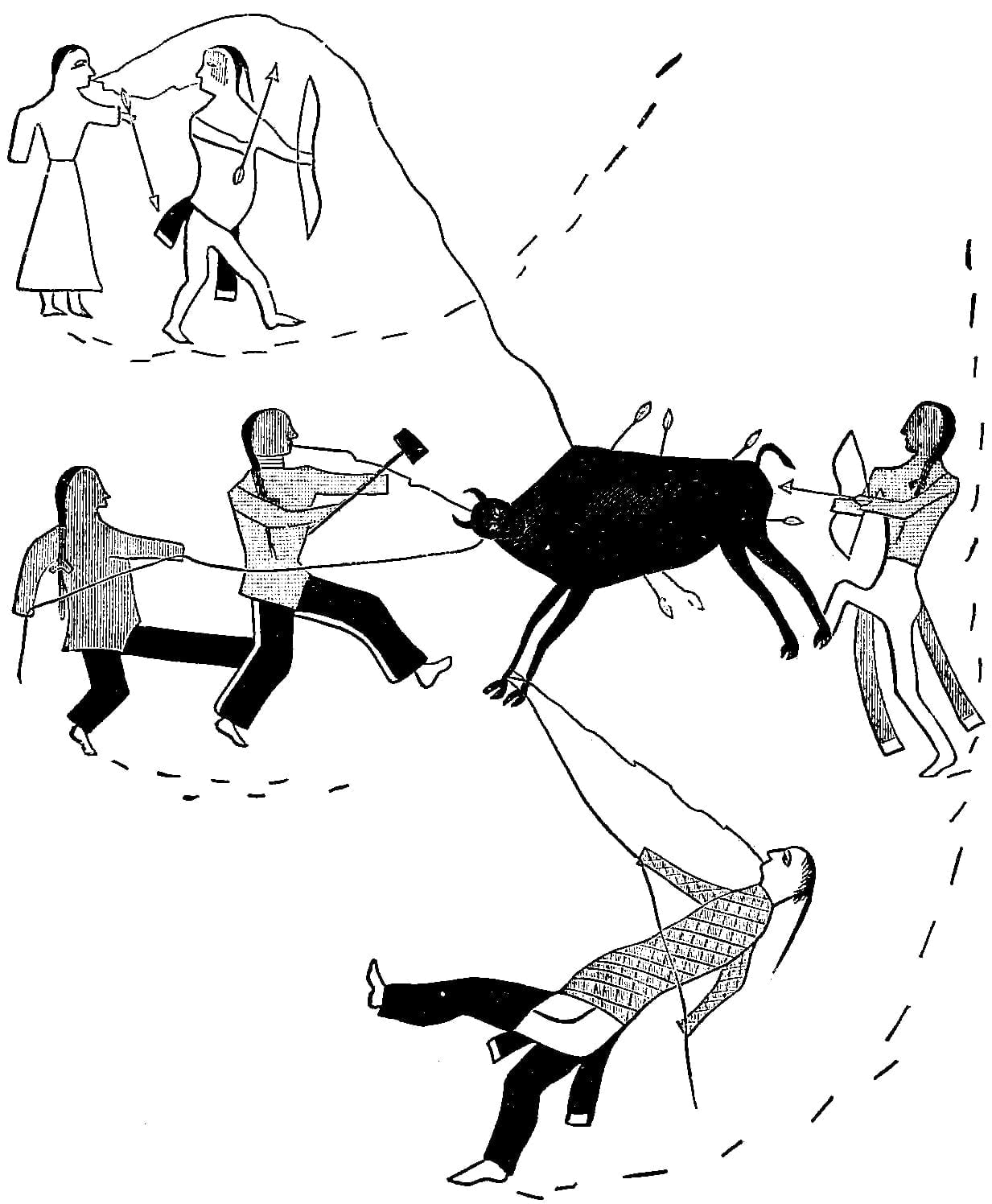
In Fig. 193, taken from the same MS. drawing book, the conversation is about the lassoing, shooting, and final killing of a buffalo which has wandered to a camp. The dotted lines indicate footprints. The Indian drawn under the buffalo having secured the animal by the fore feet, so informs his companions, as indicated by the line drawn from his mouth to the object mentioned; the left-hand figure, having also secured the buffalo by the horns, gives his nearest comrade an opportunity to strike it with an ax, which he no [pg 375] doubt announces that he will do, as the line from his mouth to the head of the animal suggests. The Indian in the upper left-hand corner is told by a squaw to take an arrow and join his companions, when he turns his head to inform her that he has one already, which fact he demonstrates by holding up the weapon.
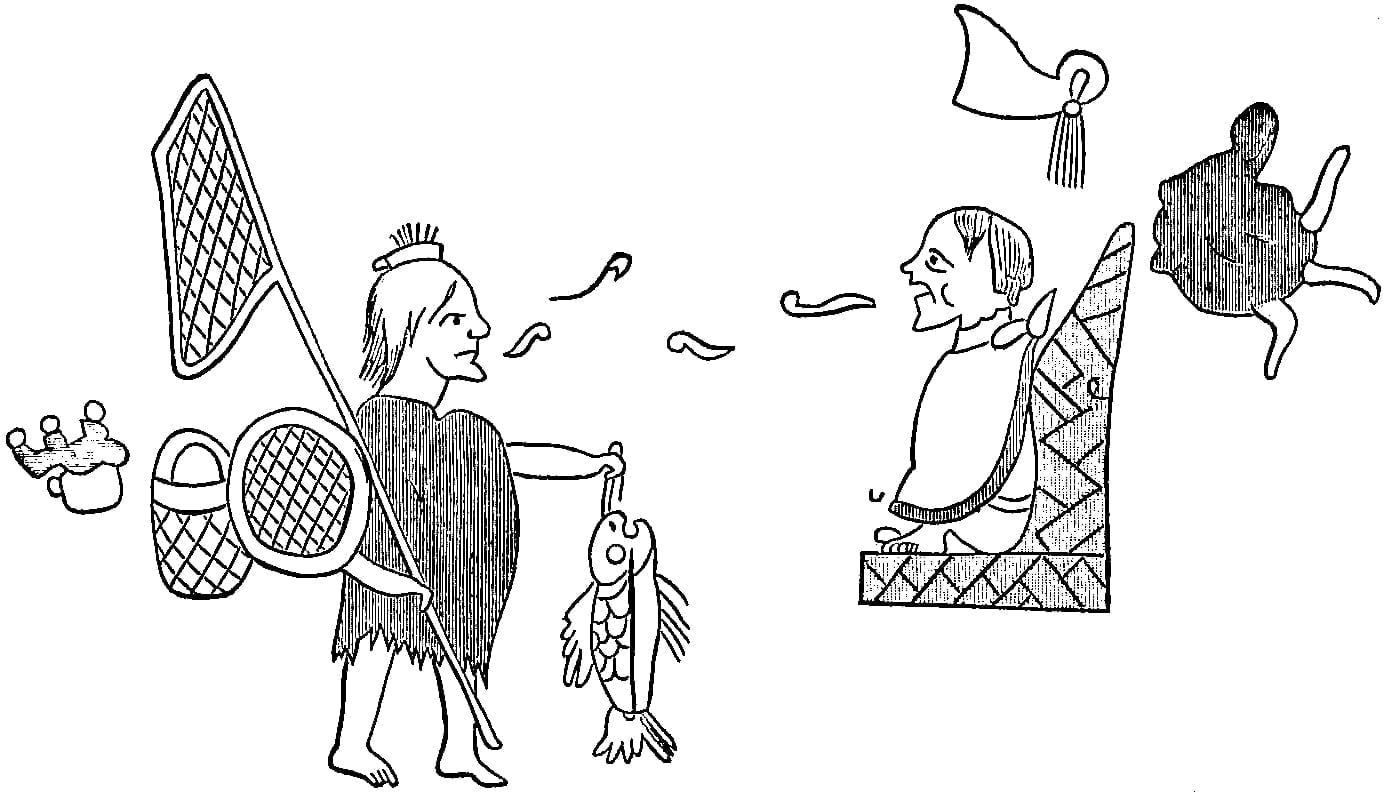
The Mexican pictograph, Fig. 194, taken from Kingsborough, II, pt. 1, p. 100, is illustrative of the sign made by the Arikara and Hidatsa for tell and conversation. Tell me is: Place the flat right hand, palm upward, about fifteen inches in front of the right side of the face, fingers pointing to the left and front; then draw the hand inward toward and against the bottom of the chin. For conversation, talking between two persons, both hands are held before the breast, pointing forward, palms up, the edges being moved several times toward one another. Perhaps, however, the picture in fact only means the common poetical image of “flying words.”

Fig. 195 is one of Landa’s characters, found in Rel. des choses de Yucatan, p. 316, and suggests one of the gestures for talk and more especially that for sing, in which the extended and separated fingers are passed forward and slightly downward from the mouth—”many voices.” Although the last opinion about the bishop is unfavorable to the authenticity of his work, yet even if it were prepared by a Maya, under his supervision, the latter would probably have given him some genuine native conceptions, and among them gestures would be likely to occur.

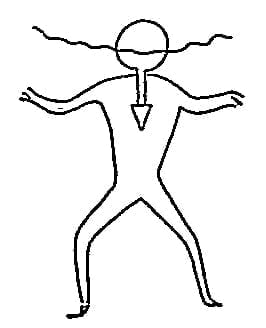
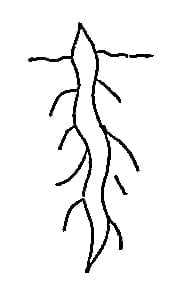
The natural sign for hear, made both by Indians and deaf-mutes, consisting in the motion of the index, or the index and thumb joined, in a straight line to the ear, is illustrated in the Ojibwa pictograph Fig. 196, “hearing ears,” and those of the same people, Figs. 197 and 198, the latter of which is a hearing serpent, and the former means “I hear, but your words are from a bad heart,” the hands being thrown out as in the final part of a gesture for bad heart, which is made by the hand being closed and held near the breast, with the back toward the breast, then as the arm is suddenly extended the hand is opened and the fingers separated from each other. (Mandan and Hidatsa I.)
The final part of the gesture, representing the idea of bad, not connected with heart, is illustrated in Fig. 236 on page 411.
The above Ojibwa pictographs are taken from Schoolcraft, loc. cit. I, plates 58, 53, 59.
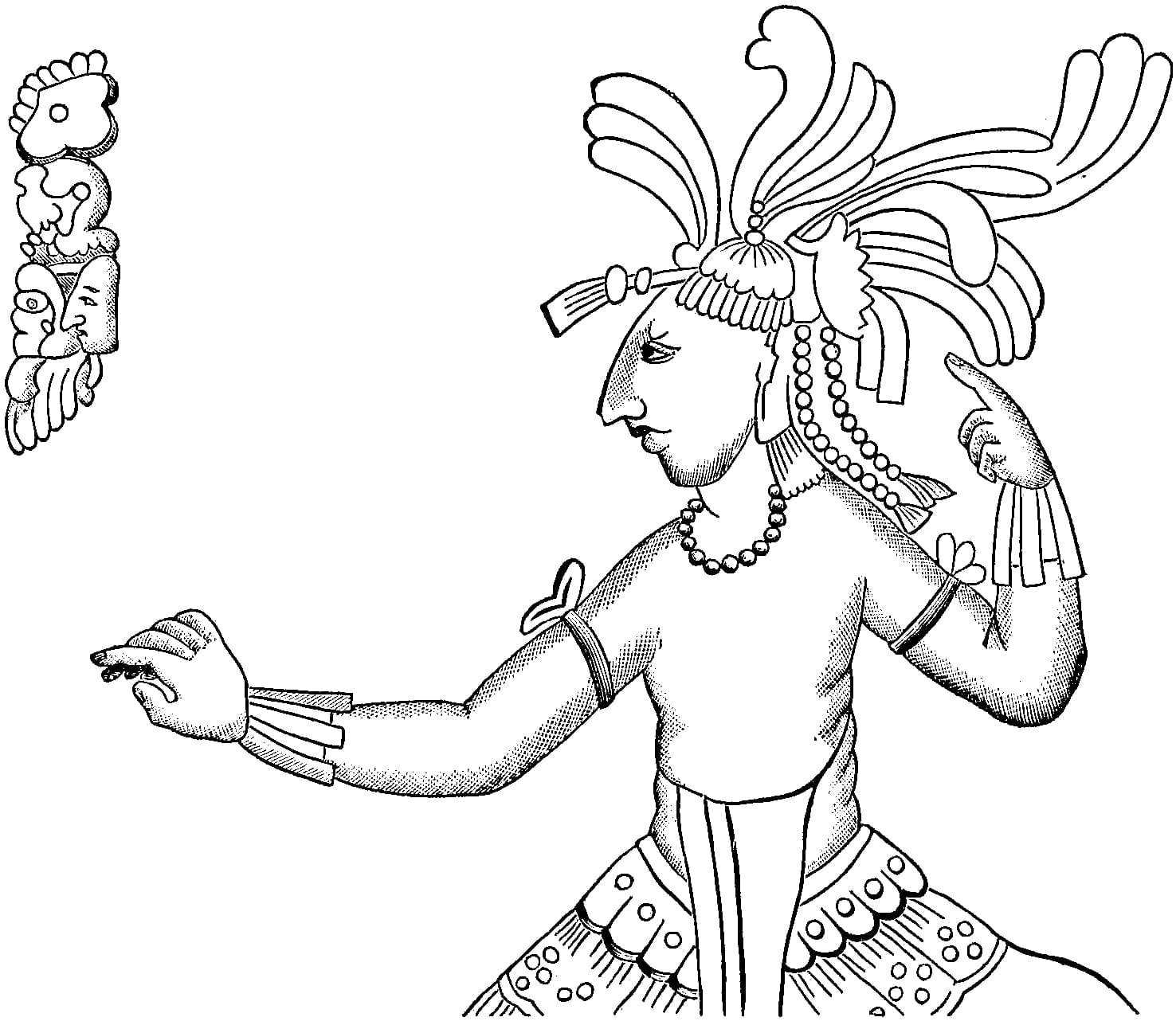
Fig. 199, a bas-relief taken from Dupaix’s Monuments of New Spain, [pg 377] in Kingsborough, loc. cit. IV, pt. 3, p. 31, has been considered to be a royal edict or command. The gesture to hear is plainly depicted, and the right hand is directed to the persons addressed, so the command appears to be uttered with the preface of Hear Ye! Oyez!

Kill / Killed
The typical sign for kill or killed is: Right hand clinched, thumb lying along finger tips, elevated to near the shoulder, strike downward and outward vaguely in the direction of the object to be killed. The abbreviated sign is simply to clinch the right hand in the manner described and strike it down and out from the right side. (Cheyenne II.) This gesture, also appears among the Dakotas and is illustrated in Fig. 200.
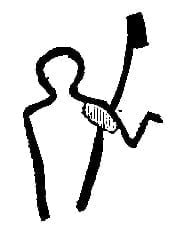
Fig. 201, taken from the Dakota Calendar, illustrates this gesture. It [pg 378] represents the year in which a Minneconjou chief was stabbed in the shoulder by a Gros Ventre, and afterwards named “Dead Arm” or “Killed Arm.” At first the figure was supposed to show the permanent drawing up of the arm by anchylosis, but that would not be likely to be the result of the wound described, and with knowledge of the gesture the meaning is more clear.

Fig. 202, taken from Report upon the Reconnaissance of Northwestern Wyoming, &c., Washington, 1875, p. 207, Fig. 53, found in the Wind River Valley, Wyoming Territory, was interpreted by members of a Shoshoni and Banak delegation to Washington in 1880 as “an Indian killed another.” The latter is very roughly delineated in the horizontal figure, but is also represented by the line under the hand of the upright figure, meaning the same individual. At the right is the scalp taken and the two feathers showing the dead warrior’s rank. The arm nearest the prostrate foe shows the gesture for killed.

The same gesture appears in Fig. 203, from the same authority and locality. The scalp is here held forth, and the numeral one is designated by the stroke at the bottom.
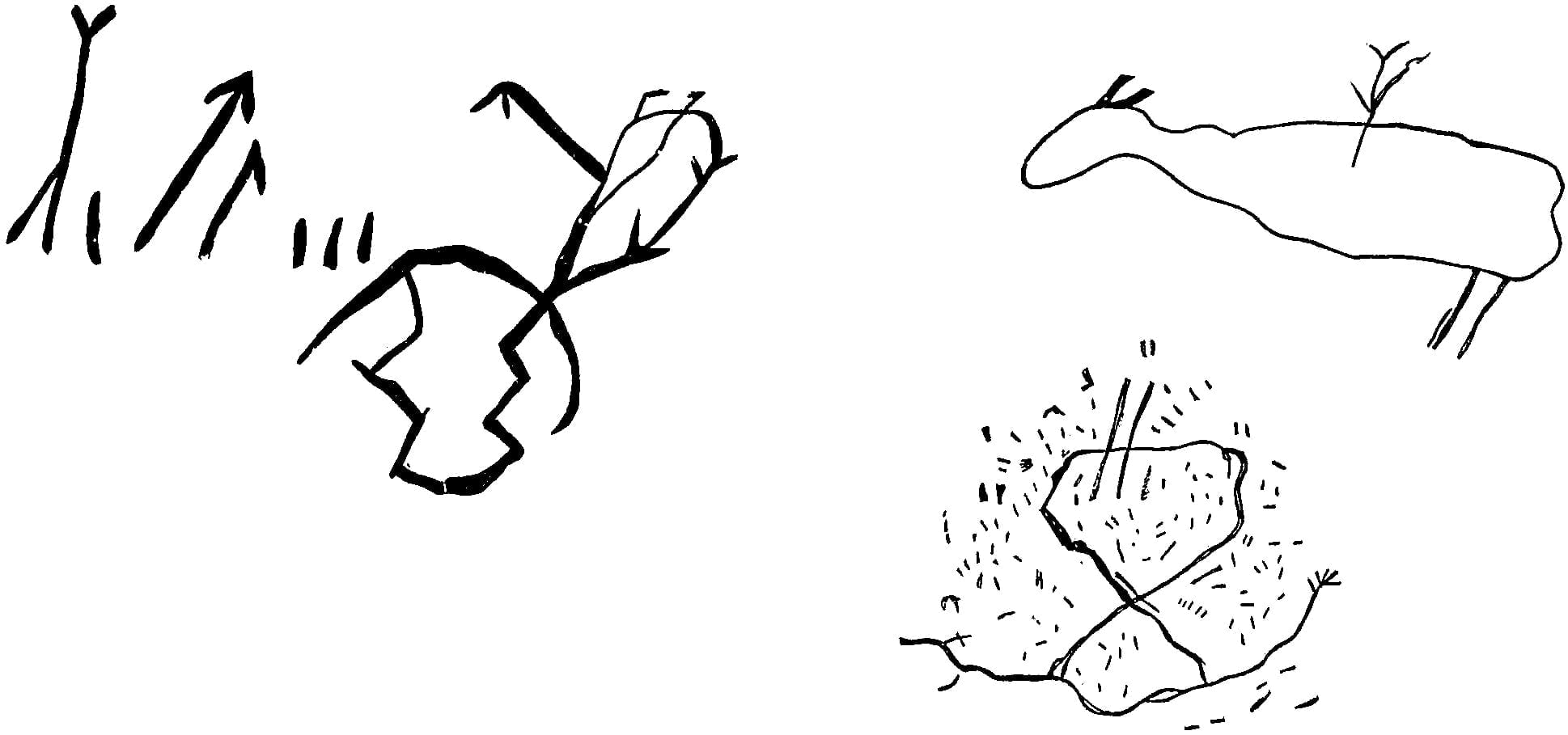
Fig. 204, from the same locality and authority, was also interpreted by the Shoshoni and Banak. It appears from their description that a Blackfoot had attacked the habitation of some of his own people. The right-hand upper figure represents his horse with the lance suspended from the side. The lower figure illustrates the log house built against a stream. The dots are the prints of the horse’s hoofs, while the two lines running outward from the upper inclosure show that two thrusts of the lance were made over the wall of the house, thus killing the occupant and securing two bows and five arrows, as represented in the left-hand group. The right-hand figure of that group shows the hand raised in the attitude of making the gesture for kill.
As the Blackfeet, according to the interpreters, were the only Indians in the locality mentioned who constructed log houses, the drawing becomes additionally interesting, as an attempt appears to have been made to illustrate the crossing of the logs at the corners, the gesture for which (log-house) will be found on page 428.
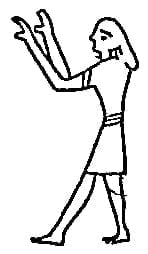
Fig. 205 is the Egyptian character for veneration, to glorify (Champollion, Dict., 29), the author’s understanding being that the hands are raised in surprise, astonishment.
The Menomoni Indians now begin their prayers by raising their hands in the same manner. They may have been influenced in this respect by the attitudes of their missionaries in prayer and benediction. The Apaches, who have received less civilized tuition, in a religious gesture corresponding with prayer spread their hands opposite the face, palms up and backward, apparently expressing the desire to receive.

Fig. 206 is a copy of an Egyptian tablet reproduced from Cooper’s Serpent Myths, page 28. A priest kneels before the great goddess Ranno, while supplicating her favor. The conception of the author is that the hands are raised by the supplicant to shield his face from the glory of the divinity. It may be compared with signs for asking for mercy and for giving mercy to another, the former being: Extend both forefingers, pointing upward, palms toward the breast, and hold the hands before the chest; then draw them inward toward their respective sides, and pass them up ward as high as the sides of the head by either cheek. [pg 380] (Kaiowa I; Comanche III; Apache II; Wichita II.) The latter, to have mercy on another, as made by the same tribes, is: Hold both hands nearly side by side before the chest, palms forward, forefinger only extended and pointing upward; then move them forward and upward, as if passing them by the cheeks of another person from the breast to the sides of the head.
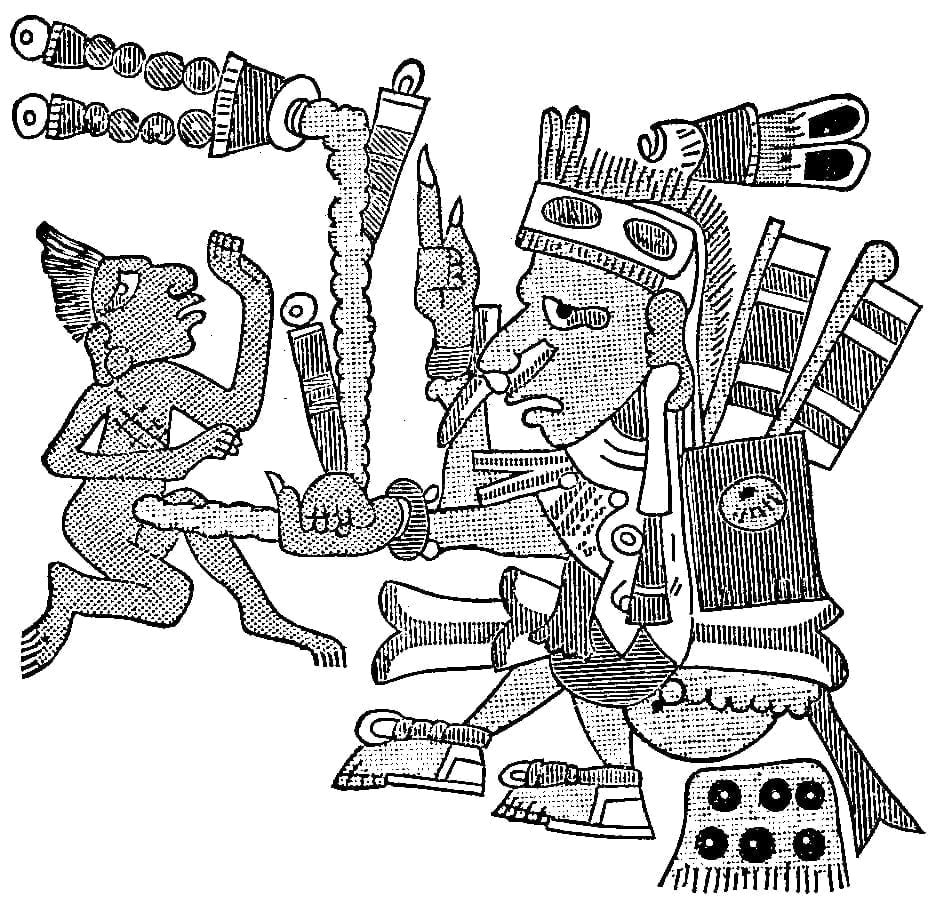
A similar gesture for supplication appears in Fig. 207, taken from Kingsborough, loc. cit., III, pt. I, p. 24.
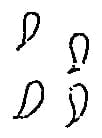
An Indian gesture sign for smoke, and also one for fire, has been described above, page 344. With the former is connected the Aztec design (Fig. 208) taken from Pipart, loc. cit., II, 352, and the latter appears in Fig. 209, taken from Kingsborough, III, pt. I, p. 21.
Medicine-man, Shaman, Doctor
A sign for medicine-man, shaman, is thus described: “With its index-finger extended and pointing upward, or all the fingers extended, back of hand outward, move the right hand from just in front of the forehead, spirally upward, nearly to arm’s length, from left to right.” (Dakota IV.)
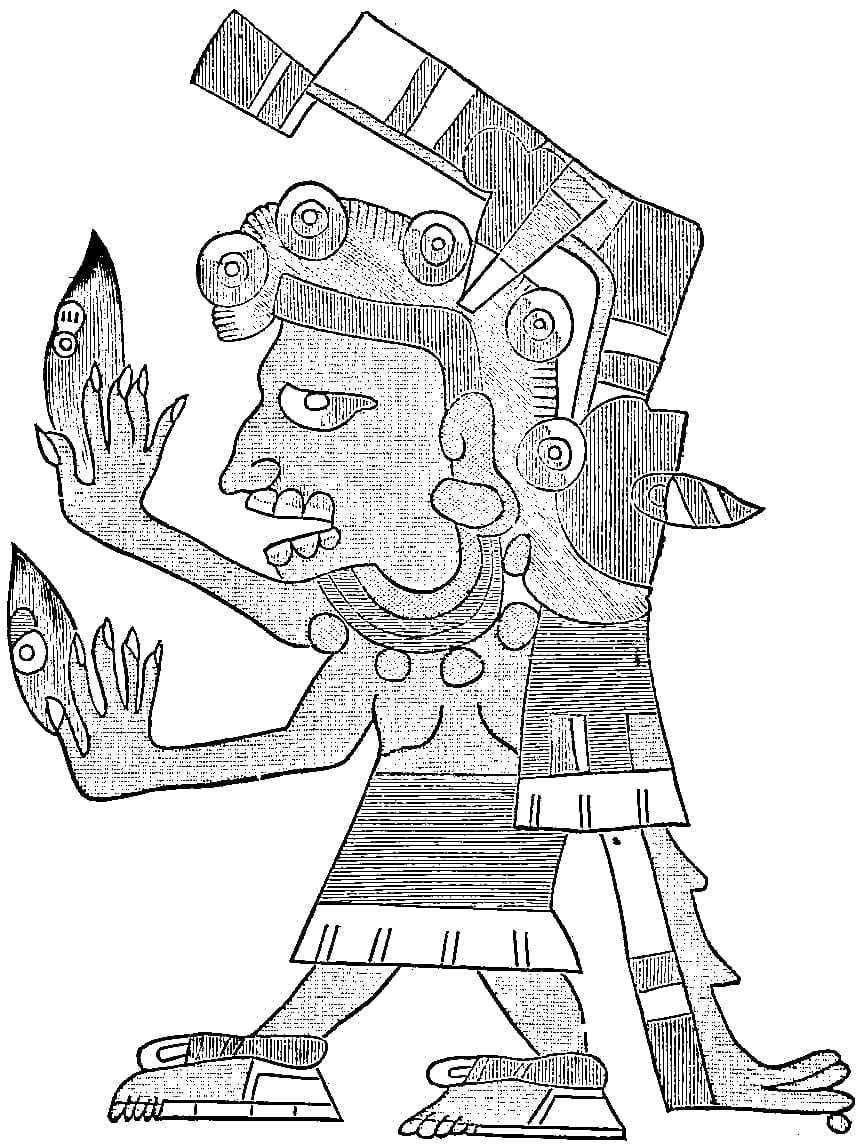
Fig. 210, from the Dakota Calendar, represents the making of medicine or conjuration. In that case the head and horns of a white buffalo cow were used.


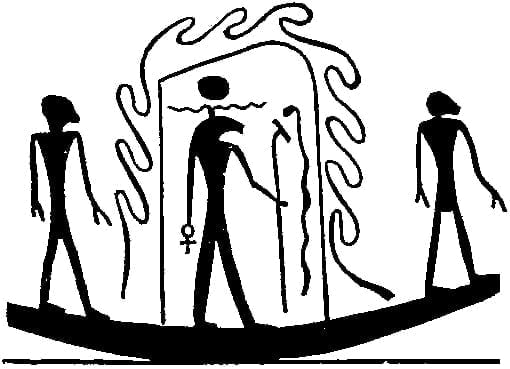

Fig. 211 is an Ojibwa pictograph taken from Schoolcraft, loc. cit., representing medicine-man, meda. With these horns and spiral may be collated Fig. 212 which portrays the ram-headed Egyptian god Knuphis, or Chnum, the spirit, in a shrine on the boat of the sun, canopied by the serpent-goddess Ranno, who is also seen facing him inside the shrine. This is reproduced from Cooper’s Serpent Myths, p. 24. The same deity is represented in Champollion, Gram., p. 113, as reproduced in Fig. 213.
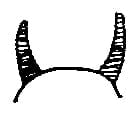
Fig. 214 is an Ojibwa pictograph found in Schoolcraft, I, pl. 58, and given as power. It corresponds with the sign for doctor, or medicine-man, made by the Absarokas by passing the extended and separated index [pg 381] and second finger of the right hand upward from the forehead, spirally, and is considered to indicate “superior knowledge.” Among the Otos, as part of the sign with the same meaning, both hands are raised to the side of the head, and the extended indices pressing the temples.
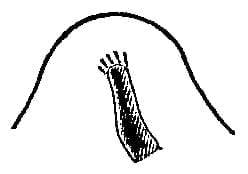
Fig. 215 is also an Ojibwa pictograph from Schoolcraft I, pl. 59, and is said to signify Meda’s power. It corresponds with another sign made for medicine-man by the Absarokas and Comanches, viz, The hand passed upward before the forehead, with index loosely extended. Combined with the sign for sky, before given, page 372, it means knowledge of superior matters; spiritual power.
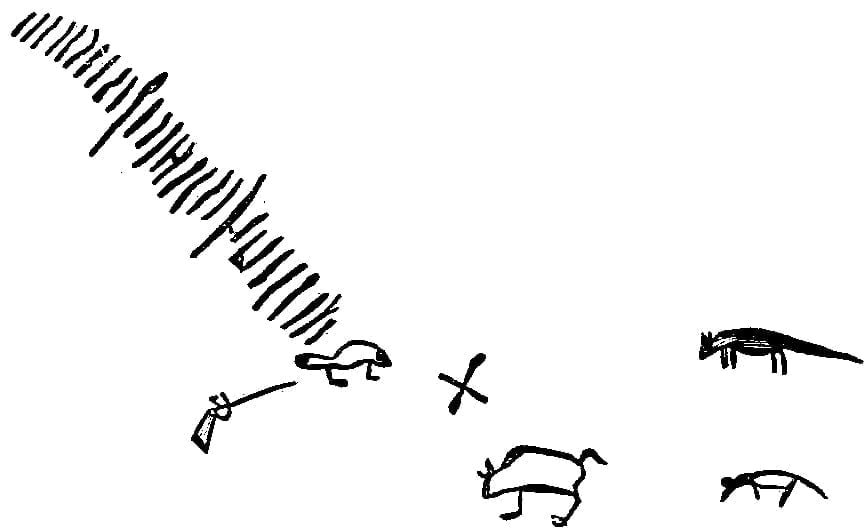
Trade
The common sign for trade is made by extending the forefingers, holding them obliquely upward, and crossing them at right angles to one another, usually in front of the chest. This is often abbreviated by merely crossing the forefingers, see Fig. 278, page 452. It is illustrated in Fig. 216, taken from the Prince of Wied’s Travels in the Interior of North America; London, 1843, p. 352.
To this the following explanation is given: “The cross signifies, ‘I will barter or trade.’ Three animals are drawn on the right hand of the cross; one is a buffalo; the two others, a weasel (Mustela Canadensis) and an otter. The writer offers in exchange for the skins of these animals (probably meaning that of a white buffalo) the articles which he has drawn on the left side of the cross. He has, in the first place, depicted a beaver very plainly, behind which there is a gun; to the left of the beaver are thirty strokes, each ten [pg 382] separated by a longer line; this means, I will give thirty beaver skins and a gun for the skins of the three animals on the right hand of the cross.”
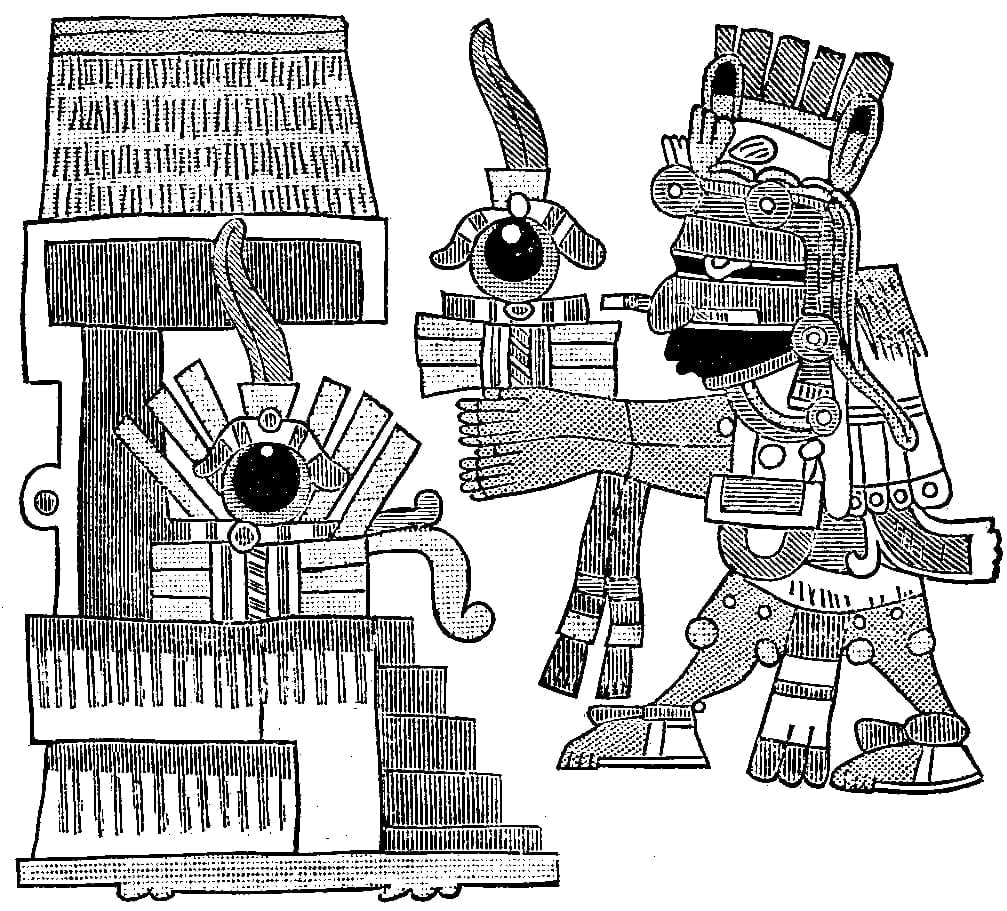
To Give / To Present
Fig. 217 is from Kingsborough, III, pt. 1, p. 25, and illustrates the sign for to give or to present, made by the Brulé-Dakotas by holding both hands edgewise before the breast, pointing forward and upward, the right above the left, then throwing them quickly downward until the forearms reach a horizontal position.
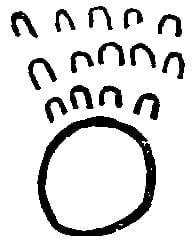
Village
Fig. 218 is taken from the Dakota Calendar, representing a successful raid of the Absarokas or Crows upon the Brulé-Sioux, in which the village of the latter was surprised and a large number of horses captured. That capture is exhibited by the horse-tracks moving from the village, the gesture sign for which is often made by a circle formed either by the opposed thumbs and forefingers of both hands or by a circular motion of both hands, palms inward, toward each other. In some cases there is a motion of the circle, from above downward, as formed.
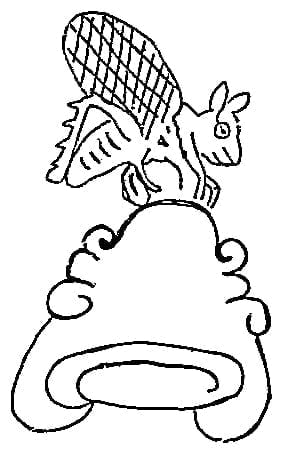
Many
Fig. 219, from Kingsborough I, pt. 3, p. 10, represents Chapultepec, “Mountain of the Locust,” by one enormous locust on top of a hill. This shows the mode of augmentation in the same manner as is often done by an exaggerated gesture. The curves at the base of the mountain are intelligible only as being formed in the sign for many, described on pages 359 and 488.
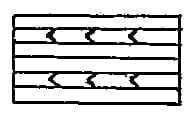
Grass and Grow
Fig. 220, taken from Pipart, loc. cit., is the Mexican pictograph for soil cultivated, i.e., tilled and planted. Fig. 221, from the same authority, shows the sprouts coming from the cultivated soil, and may be compared with the signs for grass and grow on page 343.

Road, Path
The gesture sign for road, path, is sometimes made by indicating two lines forward from the body, then imitating walking with the hands upon the imaginary road. The same natural representation of road is seen in Fig. 222, taken from Pipart, loc. cit., page 352. A place where two roads meetcross-roadsis shown in Fig. 223, from Kingsborough. Two persons are evidently having a chat in sign language at the cross-roads.

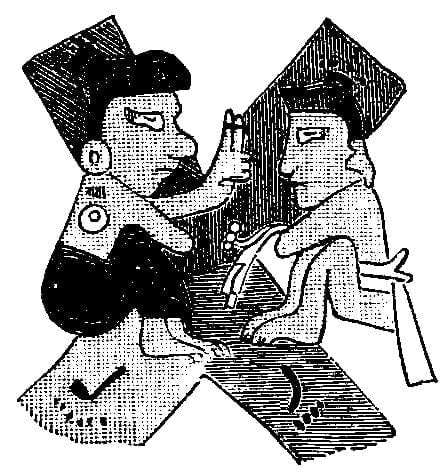

If no gesture is actually included in all of the foregoing pictographs, it is seen that a gesture sign is made with the same conception which is obvious in the ideographic pictures. They are selected as specially transparent and clear. Many others less distinct are now the subject of examination for elucidation. The following examples are added to show the ideographic style of pictographs not connected with gestures, lest it may be suspected that an attempt is made to prove that gestures are always included in or connected with them. Fig. 224, from the Dakota Calendar, refers to the small-pox which broke out in the year (1802) which it specifies. Fig. 225 shows in the design at the left, a warning or notice, that though a goat can climb up the rocky trail a horse will tumble”No Thoroughfare.” This was contributed by Mr. J.K. Hillers, photographer of the United States Geological Survey, as observed by him in Cañon De Chelly, New Mexico, in 1880.

Signs Connected with Ethnologic Facts
The present limits permit only a few examples of the manner in which the signs of Indians refer to sociologic, religious, historic, and other ethnologic facts. They may incite research to elicit further information of the same character.
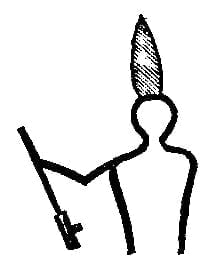
The Prince of Wied gives in his list of signs the heading Partisan, a term of the Canadian voyageurs, signifying a leader of an occasional or volunteer war party, the sign being reported as follows: Make first the sign of the pipe, afterwards open the thumb and index-finger of the right hand, back of the hand outward, and move it forward and upward in a curve. This is explained by the author’s account in a different connection, that to become recognized as a leader of such a war party as above mentioned, the first act among the tribes using the sign was the consecration, by fasting succeeded by feasting, of a medicine pipe without ornament, which the leader of the expedition afterward bore before him as his badge of authority, and it therefore naturally became an emblematic sign. This sign with its interpretation supplies a meaning to Fig. 226 from the Dakota Calendar showing “One Feather,” a Sioux chief who raised in that year a large war party against the Crows, which fact is simply denoted by his holding out demonstratively an un-ornamented pipe. In connection with this subject, Fig. 227, drawn and explained by Two Strike, an Ogalalla Dakota, relating to his own achievements, displays four plain pipes to exhibit the fact that he had led four war parties.
Friend
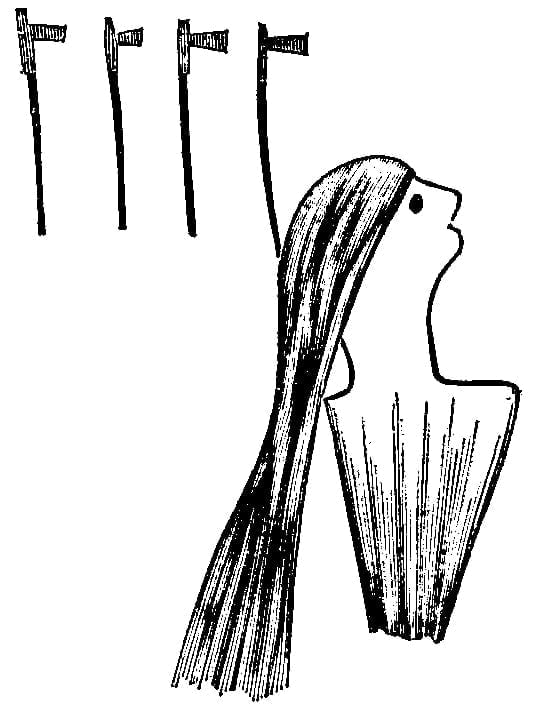
The sign of the pipe or of smoking is made in a different manner, when used to mean friend, as follows: (1) Tips of the two first fingers of the right hand placed against or at right angles to the mouth; 2) suddenly elevated upward and outward to imitate smoke expelled. (CheyenneII). “We two smoke together.” This is illustrated in the Ojibwa pictograph, Fig. 228, taken from Schoolcraft I, pl. 59.

Peace, Friendship
A ceremonial sign for peace, friendship, is the extended fingers, separated (R), interlocked in front of the breast, hands horizontal, backs outward. (Dakota I.) Fig. 229 from the Dakota Calendar exhibits the beginning of this gesture. When the idea conveyed is peace or friendship with the whites, the hand shaking of the latter is adopted as in Fig. 230, also taken from the Dakota Calendar, and referring to the peace made in 1855 by General Harney, at Fort Pierre, with a number of the tribes of the Dakotas.


It is noticeable that while the ceremonial gesture of uniting or linking hands is common and ancient in token of peace, the practice of shaking hands on meeting, now the annoying etiquette of the Indians in their intercourse with whites, was not until very recently and is even now seldom used by them between each other, and is clearly a foreign importation. Their fancy for affectionate greeting was in giving a pleasant bodily, sensation by rubbing each other on the breast, abdomen, and limbs, or by a hug. The senseless and inconvenient custom of shaking hands is, indeed, by no means general throughout the world, and in the extent to which it prevails in the United States is a subject of ridicule by foreigners. The Chinese, with a higher conception of politeness, shake their own hands. The account of a recent observer of the meeting of two polite Celestials is: “Each placed the fingers of one hand over the fist of the other, so that the thumbs met, and then standing a few feet apart raised his hands gently up and down in front of his breast. For special courtesy, after the foregoing gesture, they place the hand which had been the actor in it on the stomach of its owner, not on that part of the interlocutor, the whole proceeding being subjective, but perhaps a relic of objective performance.” In Miss Bird’s Unbeaten Trades in Japan, London, 1880, the following is given as the salutatory etiquette of that empire: “As acquaintances come in sight of each other they slacken their pace and approach with downcast eyes and averted faces as if neither were worthy of beholding each other; then they bow low, so low as to bring the face, still kept carefully averted, on a level with the knees, on which the palms of the hands are pressed. Afterwards, during the friendly strife of each to give the pas to the other, the palms of the hands are diligently rubbed against each other.”

The interlocking of the fingers of both hands above given as an Indian sign (other instances being mentioned under the head of Signals, infra) is also reported by R. Brough Smyth, Aborigines of Victoria, loc. cit., Vol. II, p. 308, as made by the natives of Cooper’s Creek, Australia, to express the highest degree of friendship, including a special form of hospitality in which the wives of the entertainer performed a part. Fig. 231 is reproduced from a cut in the work referred to.
But besides this interlocked form of signifying the union of friendship the hands are frequently grasped together. Sometimes the sign is abbreviated by simply extending the hand as if about to grasp that of another, and sometimes the two forefingers are laid side by side, which last sign also means, same, brother and companion. For description and illustration of these three signs, see respectively pages 521, 527, and 317. A different execution of the same conception of union or linking to signify friend is often made as follows: Hook the curved index over the curved forefinger of the left hand, the palm of the latter pointing forward, the palm of the right hand being turned toward the face; remaining fingers and thumbs being closed. (DakotaVIII.) Fig. 232.
Medicine

Wied’s sign for medicine is “Stir with the right hand into the left, and afterward blow into the latter.” All persons familiar with the Indians will understand that the term “medicine,” foolishly enough adopted by both French and English to express the aboriginal magic arts, has no therapeutic significance. Very few even pretended remedies were administered to the natives and probably never by the professional shaman, who worked by incantation, often pulverizing and mixing the substances mystically used, to prevent their detection. The same mixtures were employed in divination. The author particularly mentions Mandan ceremonies, in which a white “medicine” stone, as hard as pyrites, was produced by rubbing in the hand snow or the white feathers of a bird. The blowing away of the disease, considered to be introduced by a supernatural power foreign to the body, was a common part of the juggling performance.
Stone
A sign for stone is as follows: With the back of the arched right hand (H) strike repeatedly in the palm of the left, held horizontal, back outward, at the height of the breast and about a foot in front; the ends of the fingers point in opposite directions. (Dakota I.) From its use when the stone was the only hammer.
Knife
A suggestive sign for knife is reported, viz: Cut past the mouth with the raised right hand. (Wied.) This probably refers to the general practice of cutting off food, as much being crammed into the mouth as can be managed and then separated from the remaining mass by a stroke of a knife. This is specially the usage with fat and entrails, the Indian delicacies.
Tomahawk
An old sign for tomahawk, ax, is as follows: Cross the arms and slide the edge of the right hand, held vertically, down over the left arm. (Wied.) This is still employed, at least for a small hatchet, or “dress tomahawk,” and would be unintelligible without special knowledge. The essential point is laying the extended right hand in the bend of the left elbow. The sliding down over the left arm is an almost unavoidable but quite unnecessary accompaniment to the sign, which indicates the way in which the hatchet is usually carried. Pipes, whips, bows and arrows, fans, and other dress or emblematic articles of the “buck” are seldom or never carried in the bend of the left elbow as is the ax. The pipe is usually held in the left hand.
Indian Village
The following sign for Indian village is given by Wied: Place the open thumb and forefinger of each hand opposite to each other, as if to make a circle, but leaving between them a small interval; afterward move them from above downward simultaneously. The villages of the tribes with which the author was longest resident, particularly the Mandans and Arikaras, were surrounded by a strong circular stockade, spaces or breaks in the circle being left for entrance or exit.
Dog
Signs for dog are made by some of the tribes of the plains essentially the same as the following: Extend and spread the right, fore, and middle fingers, and draw the hand about eighteen inches from left to right across the front of the body at the height of the navel, palm downward, fingers pointing toward the left and a little downward, little and ring fingers to be loosely closed, the thumb against the ring-finger. (Dakota IV.) The sign would not be intelligible without knowledge of the fact that before the introduction of the horse, and even yet, the dog has been used to draw the tent- or lodge-poles in moving camp, and the sign represents the trail. Indians less nomadic, who built more substantial lodges, and to whom the material for poles was less precious than on the plains, would not have comprehended this sign without such explanation as is equivalent to a translation from a foreign language, and the more general one is the palm lowered as if to stroke gently in a line conforming to the animal’s head and neck. It is abbreviated by simply lowering the hand to the usual height of the wolfish aboriginal breed, and suggests the animal par excellence domesticated by the Indians and made a companion.
Several examples connected with this heading may be noticed under the preceding head of gestures connected with pictographs, and others of historic interest will be found among the Tribal Signs, infra.
